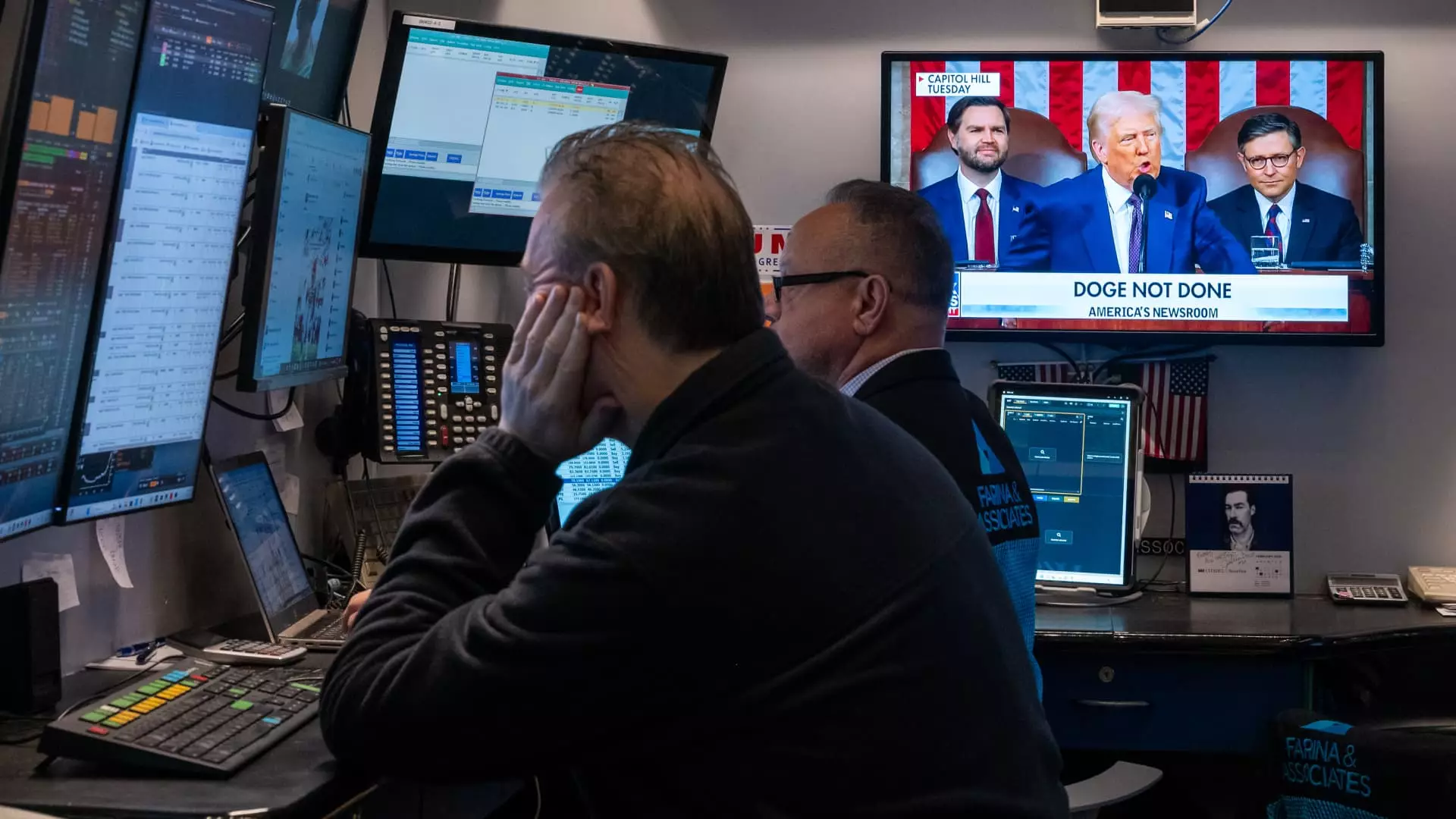In an ever-evolving financial landscape, the uncertainty plaguing global markets has never been more palpable. With geopolitical tensions and economic fluctuations creating palpable anxiety among investors, it is no surprise that more individuals are looking for products that offer protection. Enter buffer exchange-traded funds (ETFs), specifically the newly launched Goldman Sachs U.S. Large Cap Buffer 3 ETF, which embodies a hybrid approach to investing that combines both risk mitigation and modest growth potential.
This ETF is targeted toward investors who are weary of drastic downturns but are not comfortable entirely exiting the market. Such products respond to two pressing challenges: the current market’s instability and the traditional investment strategies that have often left investors exposed to significant downturns. Bryon Lake, Goldman Sachs’ Chief Transformation Officer, emphasized this dual nature, stating that these instruments are designed to cushion losses while still allowing for potential upside. This innovative solution could very well represent a transformation in how retail investors navigate financial risks.
A Balancing Act: Downside Protection vs. Growth Potential
The key selling point of buffer ETFs is their built-in downside protection, which typically safeguards against losses ranging from 5% to 15%. Unlike conventional ETFs that compel investors to face full brunt of market havoc, these buffer products create a safety net, permitting investors to breathe a little easier as they ride out market fluctuations. However, what’s equally intriguing is the provision that allows for limited upside participation, generally capped between 5% and 7%. This delicate balance between risk and reward makes buffer ETFs an attractive option for those who are cautious yet still want some exposure to market gains.
It is here that one could argue that traditional investment tactics are falling short. Many retail investors have historically leaned toward diversification as their primary risk management strategy, often investing in a variety of assets to minimize exposure to downturns. Buffer ETFs challenge this notion by providing a more direct protective mechanism. While the older strategies certainly have merit, they fall short in today’s environment where swift market reactions can erode nest eggs overnight.
A New Era for Investment Strategies
Beyond the mechanics of these financial products, investing in buffer ETFs also symbolizes a broader shift in investor behavior. The simplicity and clarity surrounding the structure of these funds may yield greater confidence among average investors who previously felt overwhelmed by financial jargon. As Lake remarks, these are “tried and true strategies that have been used by investors for decades.” By repackaging familiar concepts in a more approachable format, Goldman Sachs is positioning itself not just as a financial behemoth but as a facilitator of financial empowerment.
However, it is essential to approach these products with a critical eye. While the resilience they offer is compelling, the reality remains that no investment is devoid of risk. The buffer ETF recently experienced a slight dip of around 3% since its inception, mirroring a broader trend reflected in the S&P 500’s nearly 4% decline. This presents an important question: are buffer ETFs truly a panacea for risk-averse investors, or do they merely mask the inherent uncertainties of the market?
In an era marked by financial skepticism and rapid change, buffer ETFs may represent a nuanced path forward. However, investors must tread cautiously, weighing not just the allure of downside protection but also the nuances of growth limitations. The balance struck in these funds necessitates a careful evaluation of one’s investment goals and risk tolerance, propelling a much-needed dialogue around modern investing methodologies.

